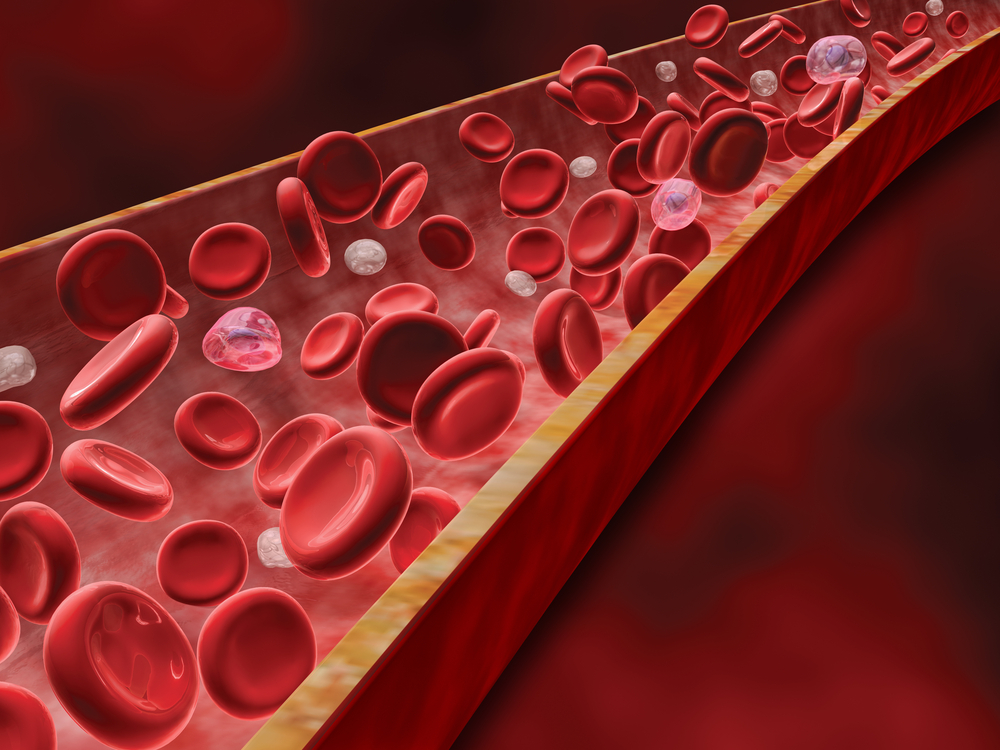Therapeutic Plasma Exchange Appears to Treat SSc, But Clinical Trial Needed, Study Says
Written by |

Therapeutic plasma exchange, which aims to treat systemic sclerosis (SSc) by clearing the blood of antibodies, cytokines and other factors that might promote disease progression, shows potential as a therapy, a review study reported.
But a well-designed clinical trial, incorporating equipment and techniques that have come into use since therapeutic plasma exchange (TPE) was first tried in the late 1970s, is necessary, the researchers wrote.
The study, “Therapeutic plasma exchange for the treatment of systemic sclerosis: A comprehensive review and analysis,” was published in the Journal of Scleroderma and Related Disorders. Its was led by Edward Harris, a research fellow in the Department of Medicine at the University of Wisconsin, Madison, founder of the Scleroderma Education Project, and an SSc patient successfully treated by TPE.
TPE, also known as therapeutic apheresis, has been available to treat systemic sclerosis since 1978. The procedure consists in replacing a large volume of the blood plasma by a sterile fluid, most commonly with 4% to 5% of a sterilized protein called albumin.
This approach is taken because “some circulating factor is involved in disease pathogenesis, for example, autoantibodies or immune complexes, and that removing the potential pathogenic factors could lead to symptom improvement,” the researchers wrote.
But it is a rarely used treatment approach, a fact the study’s authors said might be due to a lack of knowledge by clinicians and researchers working with SSc patients about published research into it.
With this in mind, they performed a comprehensive review of published work on TPE used to treat SSc.
The team identified 46 relevant articles that met their search criteria and that involved, in total, 572 patients (455 of whom were treated; others served as controls). Nineteen of these articles were case studies, and the remaining 27 ranged from small observational studies to three randomized clinical trials, of which two were of use. (The third, in China, used tools and approaches different from the West and so could not serve as a comparison.)
But many of the articles may be dated: 33 of the 46 studies were conducted prior to 2000, detailing approaches and tools possibly no longer in use. The two clinical trials took place in the late 1980s.
Analysis revealed that the majority of patients treated with TPE showed improvements in disease symptoms and markers. Improvements were also seen both in short- and long-term TPE delivery regimens. In general, TPE seemed to be more effective when started early in the disease process.
TPE showed significant benefits in treating Raynaud’s symptoms and in digital ulceration healing after three to four weekly treatments, the study reported. Raynaud’s phenomenon and digital ulcers are common problems in SSc. Raynaud’s is caused by the narrowing of small arteries, like those in the fingers and toes, which limit blood circulation.
Researchers also observed that the benefits of only a few TPE treatments lasted for months (typically at least six months), but stabilization of symptoms was only achieved with continued and long-term treatment.
One case report — that of Harris, the study’s lead author — showed sustained remission of symptoms over 22 years with regular TPE treatment.
The reviews also showed the treatment was safe and generally very well-tolerated, with adverse events being rare.
This evidence suggests that long-term TPE is a potential low-risk and cost-effective therapy to control SSc symptoms and signs, the review states. However, the researchers are cautious and emphasize that more evidence is needed.
Among their reasons: only 25 of the 46 studies analyzed used TPE as a single systemic intervention, and only 10 were considered by the team to be of sufficient quality that “effectiveness of treatment can be clearly determined.”
“It is clear that additional, well-designed studies are needed to evaluate fully the efficacy of TPE treatments in different SSc patient populations,” the researchers wrote. Still, they added, “the consistency of the findings showing significant clinical benefit from TPE treatments with very low risk suggests that TPE may be an appropriate treatment option to consider even as these additional studies are being done.”
How exactly TPE benefits SSc patients — its mechanism of action — remains unclear.
The team suggested it might be linked to the fact that SSc patients have an abnormal blood rheology (flow properties), including higher-than-usual viscosity and aggregated red blood cells.
“Abnormally clumped red blood cells may be a significant component of the etiopathogenic processes in SSc, potentially contributing to the vascular damage,” the researchers wrote, adding that “a full examination of the research on abnormal blood rheology in SSc and the potential role of RBC [red blood cells] aggregation in SSc pathogenesis is beyond the scope of this review paper, but merits future study.”
More study is also needed because, since no one knows exactly how TPE works, researchers and physicians “currently have no way of knowing which patients are appropriate candidates for TPE and what protocol should be followed to produce the best possible outcomes,” the team wrote.
Harris discussed at length his knowledge of the TPE procedure and thoughts regarding it in his May 2016 interview with Scleroderma News.
His successful 22-year case study was published in the journal Clinical Hemorheology and Microcirculation in 2017, and he estimated his treatment — 16 rounds per year — to cost about $20,000 annually.
The recent review study noted that “while TPE is not an inexpensive procedure, [its] annual costs are similar to modern pharmaceuticals commonly used to treat SSc and other autoimmune diseases.”
The researchers concluded by emphasizing that newer techniques and equipment now available could considerably improve the benefits and long-term success rates of TPE treatment.
As such, a necessary step is a well-designed clinical trial to evaluate TPE in SSc patients, using the most recent equipment and improved blood access techniques.





